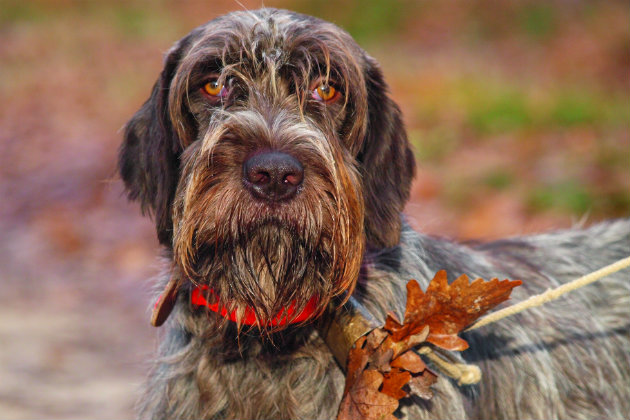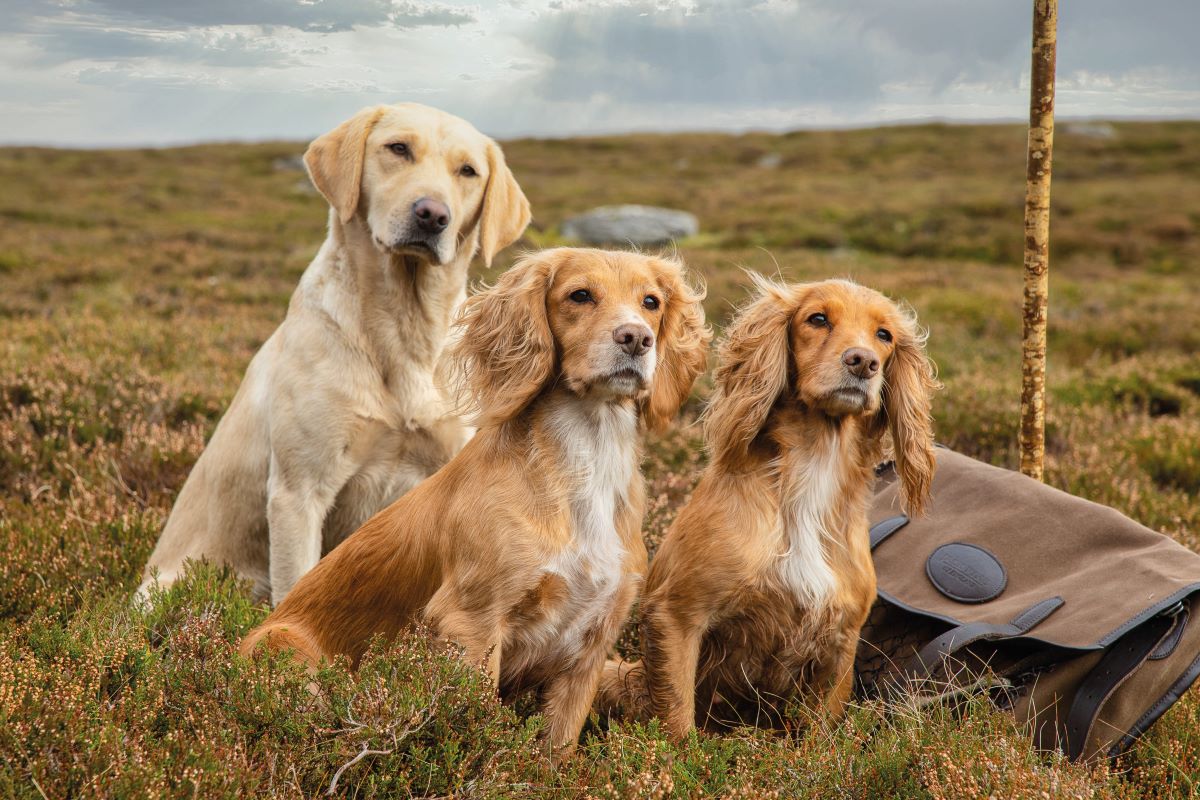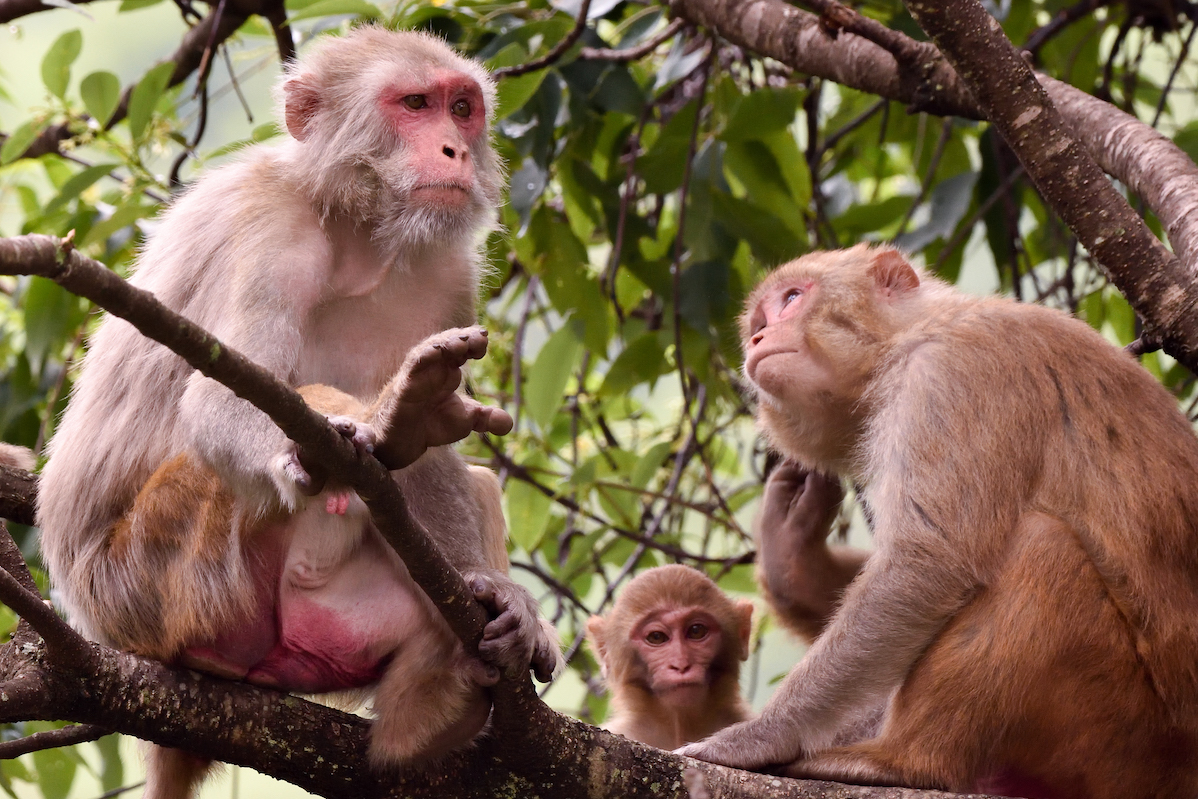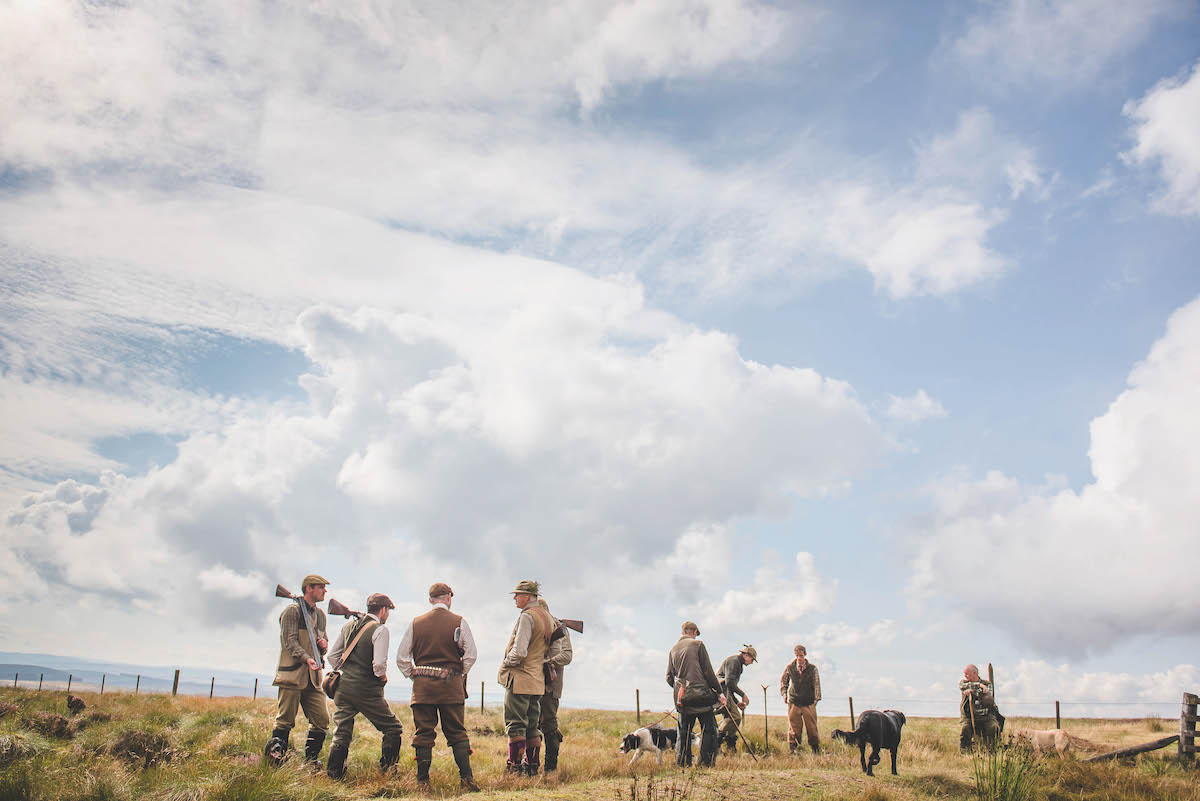A day with bracco Italiano and spinone Italiano gun dogs
Paul Quagliana visits a training day in East Sussex to see the Mediterranean bracco Italiano and spinone Italiano strut their stuff in the shooting field - two breeds that are only occasionally encountered.
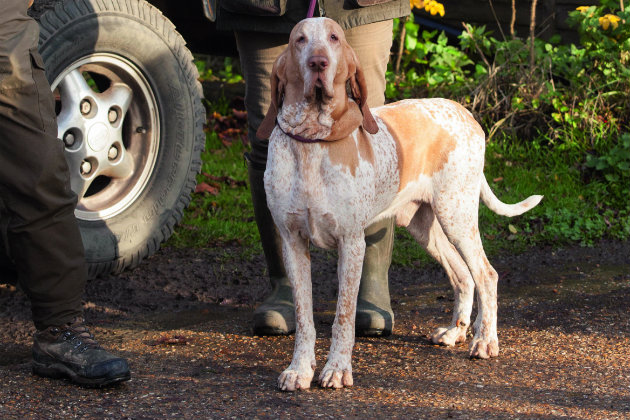
Bracco Italiano Club secretary Kim Parris with her bracco Bentley, whose "nose is too good," she says
The day had been arranged by the Bracco Italiano Club, which had invited its friends in the Spinone Club of Great Britain to come along, Mike Fellows, the National Gamekeepers’ Organisation (NGO) regional chairman for Sussex having provided the ground on the shoot he keepers near Robertsbridge. Mike has worked voluntarily for the NGO for over six years. “It has its challenges,” he said. “But it’s a great role, and I have made many friends and met people I would never have known through the job.”
The bracco bred for covering distance, the spinone for thicker cover
The ground we were on was a mixture of pasture and heavy woodland set over 600 acres on Wealden clay. Mike has held numerous dog days with other breeds here but never with bracchi and spinoni. He was being assisted by Graham Burgess, a neighbouring keeper. Graham was formerly employed for several years by the late game Shot and shoot owner Sir Tom Cowie, and he has experience of field trials and judging from when he keepered in the north.
The day came about through a Gun, Richard Abraham, who shot on the estate. He had previously owned a bracco and knew Sue Parr, the working secretary for the Bracco Italiano Club, and her husband Alan, who are great fans of the breed.
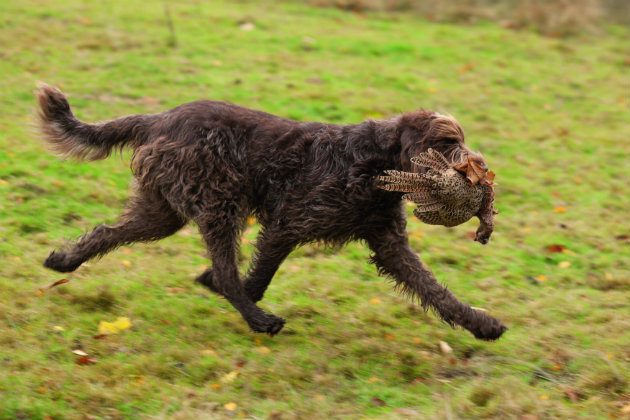
The colour of spinoni can vary from almost white to dark brown
The bracco was bred for covering distance, while the spinone was for thicker cover and water. While they have their similarities in some respects — both are known for their friendly and amiable natures, for example — the breeds possess vastly differing features. The bracco has a sleek pelt and a prominent muzzle that gives it a rather dignified appearance. By contrast, the spinone is a much hairier beast whose wiry locks can range from an almost white colouration through to a deep “Chewbacca” brown. Both breeds have their own terminoloy when it comes to colouration. A spinone can be orange or brown, while the bracco is orange, amber or chestnut.
Beginning the day was Rod Johnson and his three-year-old spinone bitch Etti who had two good retrieves. Etti pointed the hen pheasant runner before retrieving it. Rod said: “I was pleased with both of those, particularly the runner.”
Secretary of the Bracco Italiano Club, Kim Parris watched her bracco, Bentley, retrieve a cock bird and then work his way along a bank ahead of the Guns, clearly on the scent of something. “His nose is too good — he wants to go with his nose rather than listen to me,” Kim said.

Freya returns having picked-up a runner
Sue Parr’s bracco, Guido, made an excellent blind retrieve of more than 100 yards, and Phil Wright’s spinone, Freya, made a good job of a cock pheasant that had run, the dog pointing it first. These were just a few examples of a great day watching these large and graceful breeds covering the often marshy ground, pasture and woodland.
I asked Kim about how she first came to own a bracco. “I didn’t grow up with gundogs, my family just had a couple of ‘Muttleys’,” she said. “But we grew up in Kent and I knew Liz and Jonathan Shaw who are credited with bringing the first bracchi into the UK in the late 1980s. They were a great inspiration and I loved the bracco. Liz and Jonathan were very clear that they wanted it to remain as a working dog. I now have seven bracchi, ranging from two youngsters who are 18 months old to the great grandmother, who is 11 years old.”
Bracco and spinone have lovely temperaments
It is difficult to say how many working bracchi there are in the UK as some will be worked but you don’t get to hear about them. However, Kim estimates there are fewer than 200 working bracchi in the UK. Bracchi are slow to mature and are still growing at four years old. You need to be patient with them, and while obedience training can start early, you cannot expect too much from them too soon.

Sue Parr and her bracco, Guido
The Bracco Italiano Club has a strong bond with the Spinone Club of Great Britain and the two often arrange days together, such as this, to see one another’s dogs work. The Bracco Italiano Club is always looking for new ground for days out.
“It can be hard to make contacts and build trust because the breed is so obscure that many people are unfamiliar with it,” said Kim. “Tim Parrett, who is with us today, has a keen interest in the Korthals Griffon breed and has a wealth of experience in training and advising handlers. Both the bracco and spinone have lovely temperaments, they are intelligent but not the easiest to train. However, the rewards are there if you keep at it and make the effort.”
What would Kim’s ideal day out with her bracchi be? “I would love to go to Italy and trial there, or Croatia where there are wild partridges,” she said.
“It is amazing to watch the Italians work their dogs. Seeing their dogs working touches them in the heart as well as the head and they are very passionate about the two breeds. I try to go to Italy every year to watch the dogwork and trials and shows are held all around the country. Tuscany is Sue Parr’s favourite, but Croatia was fantastic and we drove all the way there to see the dogs in action.”
While cockers, springers and Labradors have become the most commonly encountered dogs on the shooting scene, there are a number of other minor breeds that crop up from time to time. I hope their proponents continue to work them as they add a splash of variety to the shooting field.

The bracco Italiano
The bracco Italiano
The bracco can weigh up to 88lb and is a popular dog in Italy. It can cover great distances, having been bred in the 4th or 5th centuries for both stamina and hunting ability. The breed was popular for centuries but by the end of the 19th century was greatly diminished. However, it was thankfully brought back from the brink and has since gained in number.

The spinone Italiano
The spinone Italiano
The spinone is believed to have been around since 500BC. There are various claims as to its exact ancestry, with some saying it is the descendant of extinct breeds. It can attain similar weights to the bracco. It is a docile breed that enjoys human contact and, like the bracco, it almost became extinct, but has become one of the most popular gundogs in Italy. Due to having a thicker coat than the bracco, the spinone was bred to enter thicker cover and it is believed that its name is derived from a type of thorn bush that grows in Italy called a spino. It is also said to be an excellent swimmer due to its large paws.
Popular gundog breeds – what’s on the rise?
Has the pedigree dog had its day? While it might be much too early to predict its eventual extinction, figures…
Hunt, point and retrieve – truly versatile dogs
Many years ago, when I started out photographing gundogs, I used to attend quite a few spring pointing tests and…

